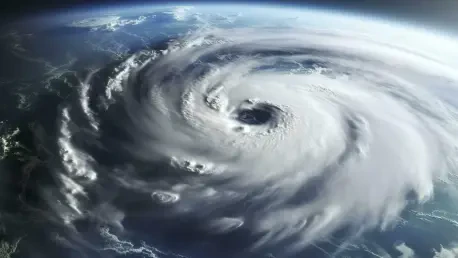As Typhoon Kalmaegi, locally known as Tino, wreaked havoc across the Philippines, leaving a trail of destruction and loss, we turn to Donald Gainsborough, a renowned expert in disaster response and policy with deep insights into the challenges faced by vulnerable regions. With a career dedicated to shaping effective strategies for crisis management, Donald offers a unique perspective on the impacts of such catastrophic events. In this interview, we explore the devastating effects of the typhoon, the unprecedented flooding in Cebu, the challenges of rescue operations, and the long road to recovery for affected communities.
How would you describe the overall impact of Typhoon Kalmaegi on the Philippines, and what stands out to you the most?
The impact of Typhoon Kalmaegi has been absolutely heartbreaking. We’ve seen a death toll of at least 66, with 26 people still missing, which shows the sheer scale of this tragedy. The central region, particularly the Visayas islands, bore the brunt of the storm, with Cebu alone accounting for 49 of those deaths. What stands out to me is the unprecedented flooding—entire towns were submerged, especially in urbanized areas around Cebu City. Homes, cars, and infrastructure were devastated by floodwaters that caught many by surprise, trapping people on rooftops. It’s a stark reminder of how quickly a storm can escalate beyond expectations.
Can you dive deeper into what made the flooding in Cebu so unusual compared to previous storms?
Certainly. The flooding in Cebu has been described as unprecedented for good reason. In just 24 hours before the typhoon made landfall, Cebu City saw 183 millimeters of rainfall—way above the monthly average of 131 millimeters. That’s an overwhelming amount of water in such a short time, far exceeding what the area’s drainage systems and natural landscape can handle. Unlike past storms where strong winds were often the main concern, here it was the water that posed the greatest threat. Major urban centers, not just rural areas, were hit hard, with floodwaters devastating highly populated neighborhoods. It’s a wake-up call about how urbanization can amplify the risks of such events.
What can you tell us about the rescue efforts in the wake of this flooding, especially for those trapped by the rising waters?
Rescue efforts have been heroic but incredibly challenging. Teams faced treacherous conditions—deep floodwaters, debris, and ongoing rain made it tough to reach those in need. Many residents were stranded on rooftops or in upper floors of buildings, waiting for help as water levels rose. Tens of thousands have been evacuated across the Visayas region, including parts of southern Luzon and northern Mindanao, which is a massive logistical undertaking. However, there are still pockets where help hasn’t reached yet, especially in more remote or heavily inundated areas. The urgency to clear access roads and ensure safety for both rescuers and survivors remains a top priority.
There was a tragic helicopter crash during a rescue mission in Agusan del Sur. Can you shed some light on what happened?
Yes, it’s a devastating loss. In Agusan del Sur, on the island of Mindanao, a military Huey helicopter crashed while conducting a humanitarian disaster response mission. All six crew members on board lost their lives, and their bodies have been recovered. Details are still emerging, but we know they were actively engaged in search and rescue operations at the time, likely navigating difficult weather and terrain. An investigation is underway to determine the cause, but it underscores the immense risks that responders face in these situations. It’s a tragic reminder of the sacrifices made by those on the front lines.
Now that the typhoon has moved on, what does the recovery process look like in the hardest-hit areas?
Recovery is going to be a long and arduous journey. While the floodwaters have largely subsided, the aftermath is daunting. Debris is blocking roads, which is a major hurdle to restoring normalcy and delivering aid. In Cebu and other affected areas, communities are grappling with damaged homes, lost livelihoods, and the emotional toll of such a disaster. Local governments and organizations are working tirelessly to clear pathways and provide relief, but the scale of destruction means it will take time. Many are still in evacuation centers, and ensuring access to food, clean water, and shelter is critical right now. The resilience of these communities is inspiring, but they’ll need sustained support.
Looking ahead, what is your forecast for the ongoing recovery efforts and the potential for future storms in the region?
I think the recovery will be a months-long process, if not longer, especially in Cebu where the damage is so extensive. The immediate focus will be on rebuilding infrastructure and supporting displaced families, but there’s also a need for long-term planning to mitigate flooding risks in urban areas. As for future storms, the Philippines faces an average of 20 typhoons a year, and with climate change intensifying weather patterns, we can expect more events like Kalmaegi. My forecast is that without enhanced preparedness—better drainage systems, early warning mechanisms, and community education—these disasters will continue to exact a heavy toll. It’s crucial to act now to build resilience for what lies ahead.









